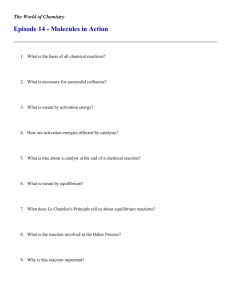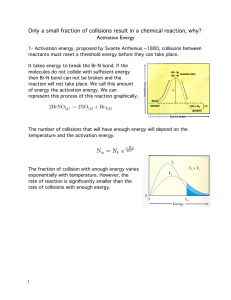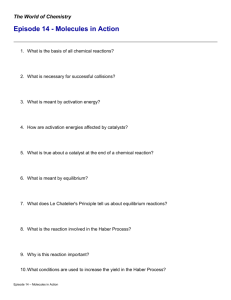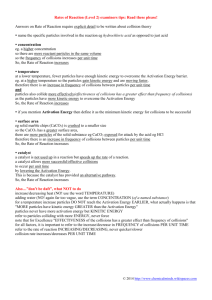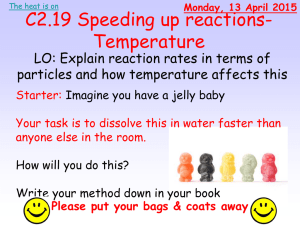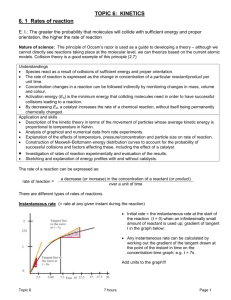here - A-level chemistry
advertisement
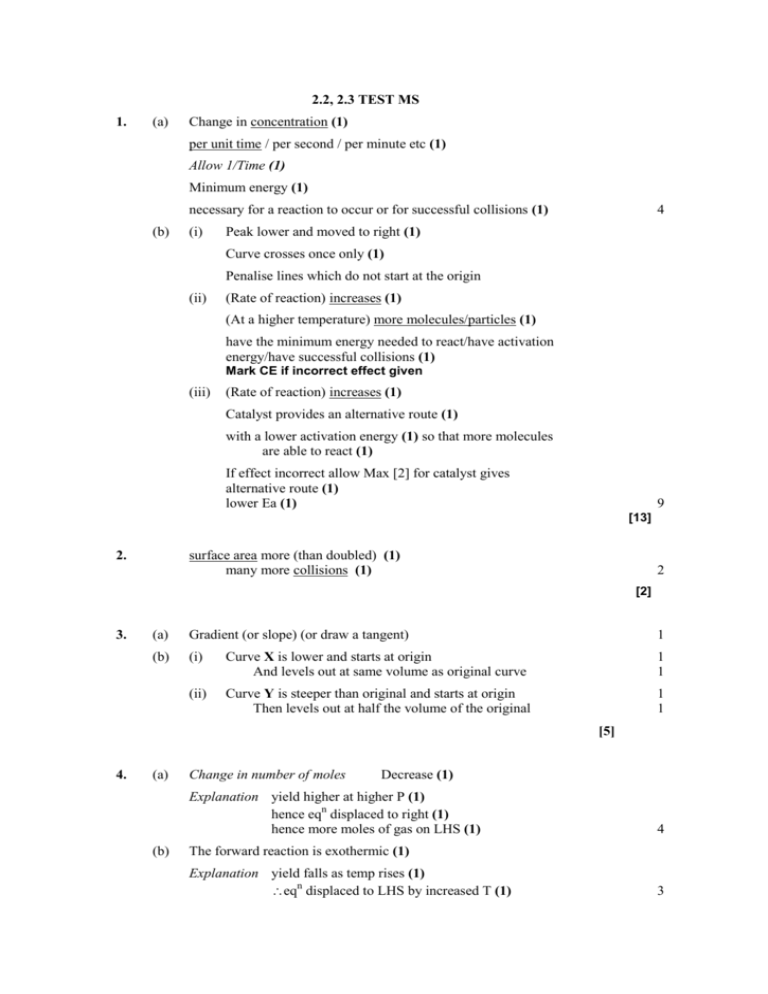
2.2, 2.3 TEST MS 1. (a) Change in concentration (1) per unit time / per second / per minute etc (1) Allow 1/Time (1) Minimum energy (1) necessary for a reaction to occur or for successful collisions (1) (b) (i) 4 Peak lower and moved to right (1) Curve crosses once only (1) Penalise lines which do not start at the origin (ii) (Rate of reaction) increases (1) (At a higher temperature) more molecules/particles (1) have the minimum energy needed to react/have activation energy/have successful collisions (1) Mark CE if incorrect effect given (iii) (Rate of reaction) increases (1) Catalyst provides an alternative route (1) with a lower activation energy (1) so that more molecules are able to react (1) If effect incorrect allow Max [2] for catalyst gives alternative route (1) lower Ea (1) 9 [13] 2. surface area more (than doubled) (1) many more collisions (1) 2 [2] 3. (a) Gradient (or slope) (or draw a tangent) 1 (b) (i) Curve X is lower and starts at origin And levels out at same volume as original curve 1 1 (ii) Curve Y is steeper than original and starts at origin Then levels out at half the volume of the original 1 1 [5] 4. (a) Change in number of moles Decrease (1) Explanation yield higher at higher P (1) hence eqn displaced to right (1) hence more moles of gas on LHS (1) (b) 4 The forward reaction is exothermic (1) Explanation yield falls as temp rises (1) eqn displaced to LHS by increased T (1) 3 (c) (d) (i) 55 – 60% (1) (ii) forward + backward reactions proceeding (1) at equal rate (1) (iii) Effect on position none (1) Explanation catalyst increases rate (1) of forward and backward reactions equally (1) (i) To increase the rate of reaction (1) (ii) High pressure generation/equt expensive (1) 6 2 [15] 5. (a) Collision theory Paricles need to collide (1) Paricles need activation energy (1) Concentration converse) (1) Rate increases as concentration increases (or More particles, hence more collisions (1) Temperature converse) (1) Rate increases as temperature increases (or At higher temperatures particles have more energy (1) More particles have energy activation energy (1) More collisions result in reaction (1) Catalyst (b) Increases rate of reaction (1) Provides an alternative route (1) With a lower activation energy (1) Max 10 Haber Process Concentration/ pressure Yield increases as pressure increases (1) Decrease in moles gas on ammonia formation (1) System moves to reduce constrant (Le Chatelier) (1) Temperature Effect depends on enthalpy change (1) If H0 yield decreases as temperature increase (1) Haber Process is an exothermic reaction (1) Equilibrium desplaced by increase in temperature (1) Yield decreases as temperature increases (1) Catalyst Equilibrium yield unaffected (1) Rates of forward and backwards reaction increased (1) Equal increase in rate (1) 11 [21]

